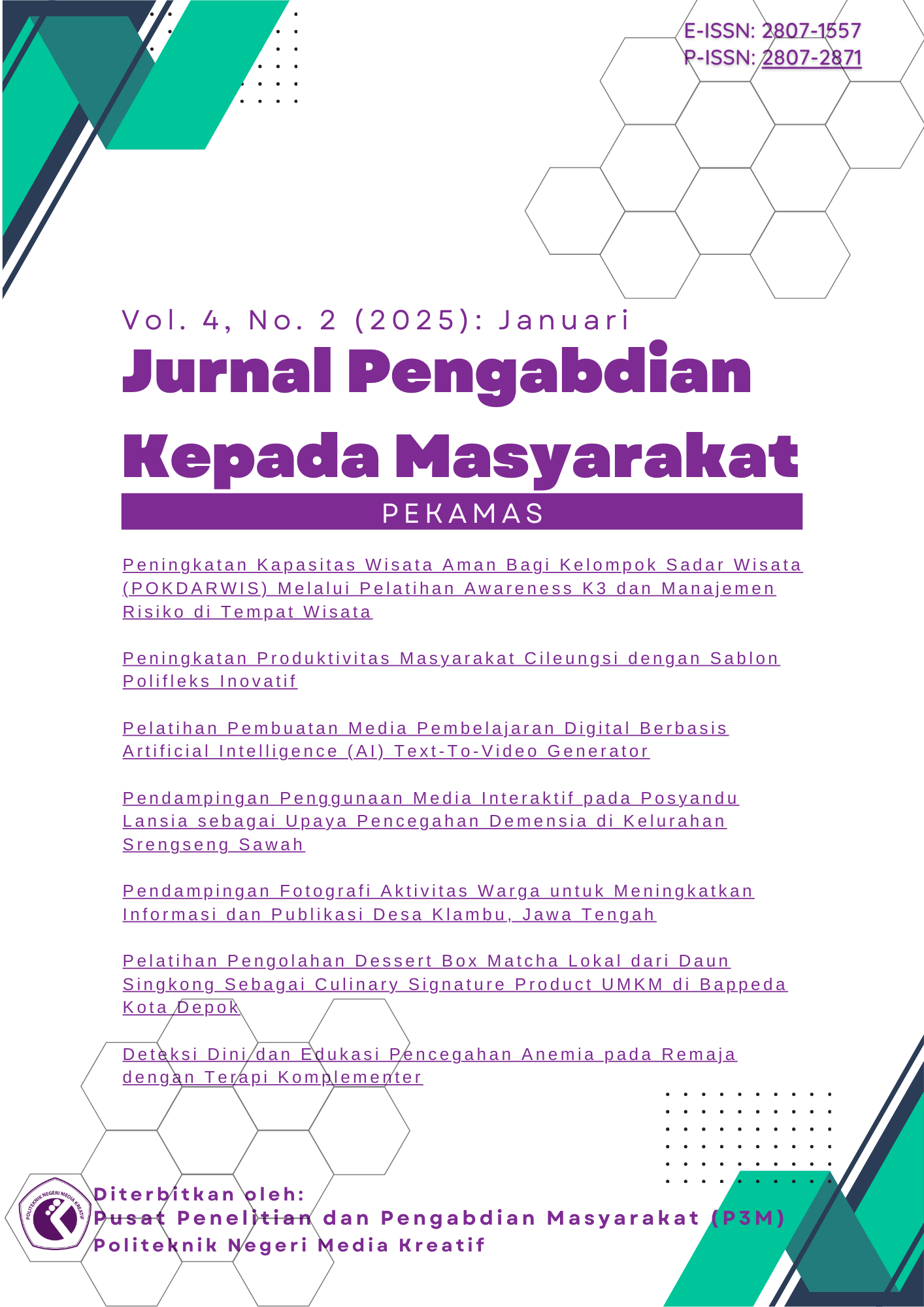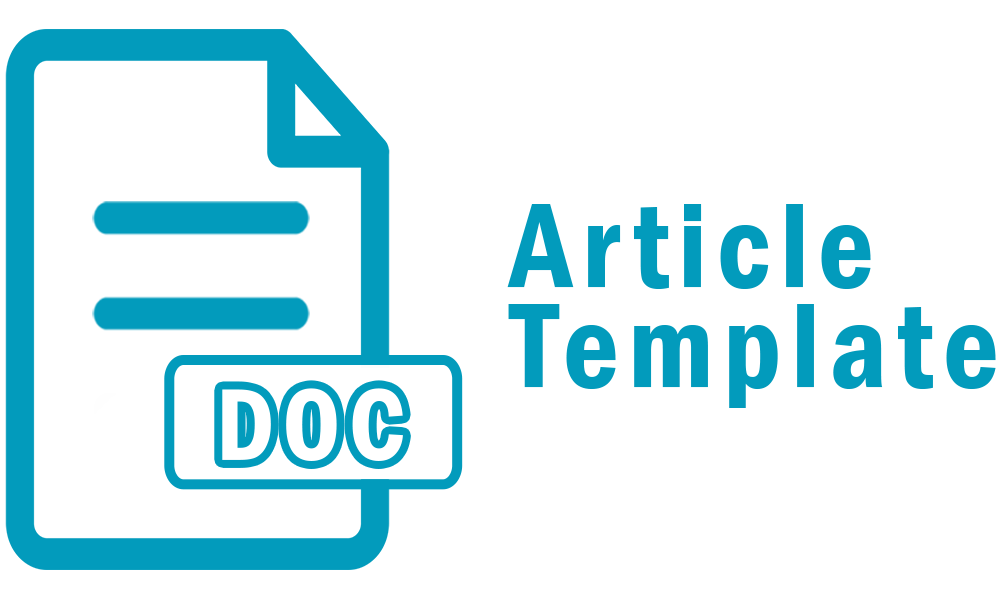DETEKSI DINI DAN EDUKASI PENCEGAHAN ANEMIA PADA REMAJA DENGAN TERAPI KOMPLEMENTER
DOI:
https://doi.org/10.46961/jpk.v4i2.1554Abstract
Abstrak: Anemia merupakan salah satu masalah kesehatan yang terjadi pada remaja dan dapat menghambat pertumbuhan, perkembangan fisik serta menurunkan produktivitas. Tujuan dari kegiatan pengabdian masyarakat ini yaitu untuk mengidentifikasi kejadian anemia, tingkat pengetahuan, dan ketertarikan remaja dalam melakukan terapi komplementer dalam mencegah dan mengatasi anemia. Kegiatan pengabdian masyarakat ini diawali dengan pelaksanaan pemeriksaan Hb dan penyuluhan tentang terapi komplementer untuk mengatasi anemia pada remaja. Sebanyak 115 orang remaja mengikuti kegiatan deteksi dan edukasi anemia, 17 orang remaja putri dan 2 orang remaja putra mengalami anemia. Rata-rata skor tingkat pengetahuan anemia sebelum penyuluhan yaitu 75,84 dan rata-rata skor tingkat pengetahuan setelah penyuluhan 83,78. Sebagian besar remaja belum mengetahui tentang penggunaan terapi komplementer untuk mengatasi anemia, dan 50% remaja tertarik menggunakan terapi komplementer untuk mencegah terjadinya anemia. Deteksi dini anemia dapat dilakukan melalui pemeriksaan Hb secara berkala. Hal ini penting untuk mencegah dan menanggulangi anemia dan mengurangi dampak merugikan anemia bagi remaja. Terapi komplementer dapat menjadi salah satu cara dalam menanggulangi masalah anemia pada remaja.
Kata Kunci: anemia; deteksi dini; edukasi; terapi komplementer
Abstract: Anemia is one of the health problems that occurs in adolescents and can inhibit growth, physical development and reduce productivity. The purpose of this community service activity is to identify the incidence of anemia, the level of knowledge, and interest of adolescents in carrying out complementary therapy in preventing and treating anemia. This community service activity began with the implementation of Hb examination and counseling on complementary therapy to treat anemia. A total of 115 adolescents participated in the anemia detection and education activities, 17 female adolescents and 2 male adolescents experienced anemia. The average score of the level of knowledge of anemia before counseling was 75.84 and the average score of the level of knowledge after counseling was 83.78. Most adolescents did not know about the use of complementary therapy to treat anemia, and 50% of adolescents were interested in using complementary therapy to prevent anemia. Early detection of anemia can be done through regular Hb examinations. This is important to prevent and overcome anemia and reduce the adverse effects of anemia on adolescents. Complementary therapy can be one way to overcome the problem of anemia in adolescents.
Keywords: anemia; complementary therapy; early detection; education
Downloads
Published
How to Cite
Issue
Section
Citation Check
License
Copyright (c) 2025 Yuanita Panma

This work is licensed under a Creative Commons Attribution-ShareAlike 4.0 International License.
Authors who publish in Jurnal Pengabdian Kepada Masyarakat agree to the following terms:
- Authors retain copyright and grant the journal right of first publication with the work simultaneously licensed under a Attribution-ShareAlike 4.0 International (CC BY-SA 4.0) License that allows others to share the work with an acknowledgment of the work's authorship and initial publication in this journal.
- Authors are able to enter into separate, additional contractual arrangements for the non-exclusive distribution of the journal's published version of the work (e.g., post it to an institutional repository or publish it in a book), with an acknowledgment of its initial publication in this journal.
- Authors are permitted and encouraged to post their work online (e.g., in institutional repositories or on their website) prior to and during the submission process, as it can lead to productive exchanges, as well as earlier and greater citation of published work (See The Effect of Open Access).










